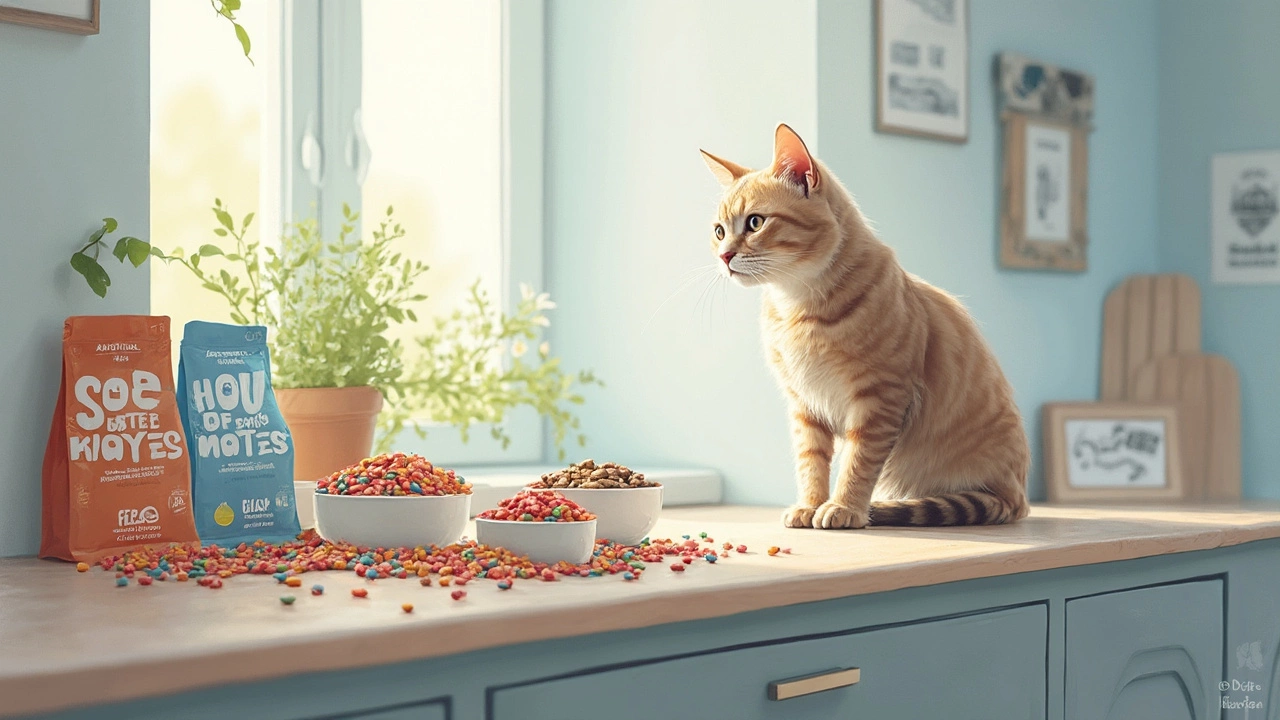Dry Cat Food: What Every Cat Owner Should Know
Choosing dry cat food can feel overwhelming, but it doesn’t have to be. The right kibble gives your cat steady energy, keeps teeth clean, and fits your budget. Below we break down the must‑know basics, so you can pick a bowl that works for both you and your kitty.
Key Ingredients to Look For
Good dry food starts with high‑quality protein. Look for real meat or fish listed first – "chicken," "salmon," or "turkey" are solid choices. Avoid vague terms like "meat meal" unless the source is clear. Next, check the fat content. Cats need about 9‑12% fat for a shiny coat and healthy skin. If the label lists plant oils as the main fat, you might want to consider another option.
Carbohydrates are where many kibbles go wrong. Cats are obligate carnivores, so they don’t need a lot of corn, wheat, or rice. Aim for a formula with less than 10% total carbs. Fiber from beet pulp or pumpkin can help with hairball control, especially for indoor cats who groom a lot.
Choosing the Right Kibble for Your Cat’s Lifestyle
Indoor cats often have lower activity levels, so they benefit from a slightly lower calorie kibble to prevent weight gain. Look for “weight management” or “light” variants that still meet protein needs. If your cat has dental issues, consider a kibble with a larger bite size that encourages chewing, which can reduce plaque buildup.
Age matters too. Kittens need more protein and calories than seniors, so pick a "kitten" formula for the first year and transition to an "adult" or "senior" blend as they age. Many brands bundle a starter kit with a sample size, which is great for testing without committing to a big bag.
Our recent deep‑dive on the Healthiest Cat Food for Indoor Cats highlighted a few top performers that check all the boxes: high animal protein, limited carbs, and added antioxidants for eye health. Brands like Orijen, Acana, and Wellness often appear in those lists.
If your cat prefers a softer texture, you don’t have to ditch dry food entirely. Mixing a spoonful of wet food or a splash of water with kibble can improve palatability while keeping the dental benefits of dry food.
Another common question is whether to choose pate or shredded wet food alongside dry kibble. The Pate vs Shredded Cat Food guide explained that texture doesn’t change nutrition dramatically – it’s more about your cat’s personal preference. So feel free to experiment with both.
When you first bring home a new bag, monitor your cat for any stomach upset. A sudden change can cause loose stools, so transition over 7‑10 days by mixing increasing amounts of the new food with the old.
Finally, think about storage. Keep dry kibble in a sealed container away from sunlight to preserve freshness. If you notice a stale smell or flies, it’s time to replace it.
Bottom line: pick a dry cat food with real animal protein, modest fat, low carbs, and the right calorie level for your cat’s age and activity. Test a small bag, watch how your cat reacts, and adjust as needed. With these basics, you’ll feel confident that you’re feeding your indoor cat a diet that supports health, happiness, and a tidy litter box.
Dry Cat Food: What Ingredients Are Bad for Cats?
Dry cat food may seem convenient, but it usually hides ingredients that aren't great for your cat's health. This article breaks down common additives and fillers you’ll find in dry kibble that can cause problems, from artificial flavors to unhealthy carbs. Get the facts on how these ingredients can impact your cat’s weight, digestion, and overall wellness. Learn to spot sneaky labels, and discover ways to pick better options for your furry friend. Find practical tips for choosing safer, healthier cat food without the guesswork.
